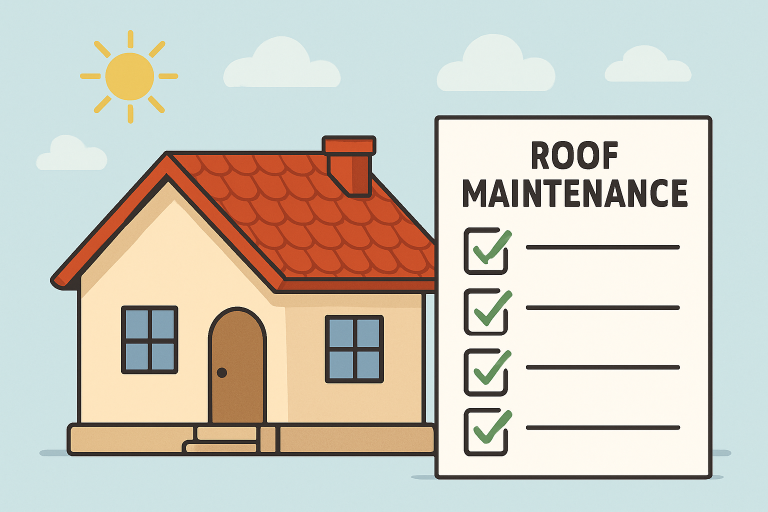Table of Contents
- Schedule Regular Roof Inspections
- Identify Common Roof Issues
- Choose a Reputable Roofing Contractor
- Understand Your Roofing Materials
- Budget for Repairs
- Prepare Your Home for Repair Work
- Review Warranty and Insurance Coverage
- Maintain Your Roof Post-Repair
Ensuring your roof remains in top condition is a crucial part of responsible homeownership. A well-maintained roof protects your property, increases energy efficiency, and helps retain home value. Preparation for roof repairs goes beyond simple maintenance—it’s about safeguarding your most significant investment before issues arise. Partnering with an experienced roofing company can make all the difference in ensuring seamless upkeep and timely repairs.
Whether your roof is nearing the end of its lifespan or you’re dealing with minor leaks, taking a proactive approach can prevent costly damage down the road. Anticipating potential issues and equipping yourself with the proper knowledge sets the stage for a smooth repair process. This guide outlines the essential steps every homeowner should follow to prevent roof problems and ensure peace of mind throughout the repair process.
By developing a roof maintenance plan, finding reputable contractors, and understanding your roof’s unique characteristics, you’ll be in the best position to protect your home from weather and wear. Knowing what to expect and how to respond makes each repair less stressful and helps maintain your home’s safety and comfort.
Curious about how frequent inspections, careful preparation, and proper budgeting combine to create a strong, reliable roof? Read on for a step-by-step action plan, expert advice, and insider tips to help you succeed as a proactive homeowner. For further guidance, consider reviewing the comprehensive homeowner resources provided by HouseLogic—a publication of the National Association of Realtors.
Schedule Regular Roof Inspections
Preventive maintenance starts with scheduling regular roof inspections. Inspect your roof at least twice a year, preferably in the spring and fall, to identify seasonal damage and ensure your roof is prepared for winter and storm conditions. After severe weather—such as hail, heavy rain, or strong winds—always conduct a visual check or schedule a professional inspection. Catching peeling or cracked shingles, sagging areas, and blocked gutters early minimizes bigger repairs later. For more information on the benefits of regular inspections, refer to the advice from HouseLogic.
Identify Common Roof Issues
Common roof problems often develop quietly but can escalate if left unaddressed. Stay alert for missing shingles, lifted flashing, water stains on ceilings, mold, or granules in your gutters. Persistent leaks and damp spots indicate problems with protective underlayment or ventilation. Addressing these signs early, rather than waiting for an emergency, ensures faster and more affordable repairs, as well as extending the roof’s life.
Choose a Reputable Roofing Contractor
Selecting the right roofing contractor is crucial for ensuring quality repairs. Select licensed, insured, and well-reviewed professionals who specialize in your roof type and have local expertise: request references, proof of credentials, and documentation of the warranties offered. A reputable contractor will always explain their process, provide written estimates, and adhere to safety standards, ensuring peace of mind during repairs.
Understand Your Roofing Materials
Each roofing material—whether asphalt, clay tile, metal, or wood shake—comes with its own unique lifespan and maintenance needs. For example, architectural shingles often last 20 to 25 years, while metal roofs may exceed 40 years with proper care. Understanding the distinctive requirements of your material helps you anticipate maintenance cycles and plan for timely repairs or replacement, reducing unexpected costs.
Budget for Repairs
Proactively budgeting for roof maintenance makes emergency repairs less overwhelming. Even a small yearly contribution to a home maintenance fund can help cushion the impact when damage occurs. Routine minor fixes cost far less than extensive replacements, and catching issues early is always more cost-effective. Keep records of previous repairs and quotes to track spending and set realistic future budgets.

Prepare Your Home for Repair Work
Adequate preparation prevents disruptions during roof repair. Clear driveways, patios, and landscaping near your house to give contractors safe, unobstructed access. Remove or cover items in the attic to prevent dust or debris accumulation, and make arrangements for pets and children during noisy repair work. Clean gutters and downspouts before repair to facilitate drainage and help the crew work efficiently.
Review Warranty and Insurance Coverage
Before starting repairs, review your roof’s warranty and your homeowner’s insurance policy to clarify coverage. Many major repairs are covered by warranties or insurance if caused by covered events or product defects. Knowing your protection helps you avoid unnecessary out-of-pocket expenses and ensures you can make a claim quickly if needed.
Maintain Your Roof Post-Repair
After completing roof repairs, ongoing maintenance is vital. Inspect your roof at regular intervals, clean gutters often, and trim overhanging tree branches. Address even minor issues—such as missing shingles or small leaks—promptly to prevent deterioration. Developing a regular check-up routine prolongs the life of your roof and provides ongoing protection for your home.
By following this proactive roadmap, you’ll protect your home, maximize your investment, and reduce stress and costs over the lifetime of your roof. Staying vigilant, informed, and organized is the foundation of safe, successful homeownership.



